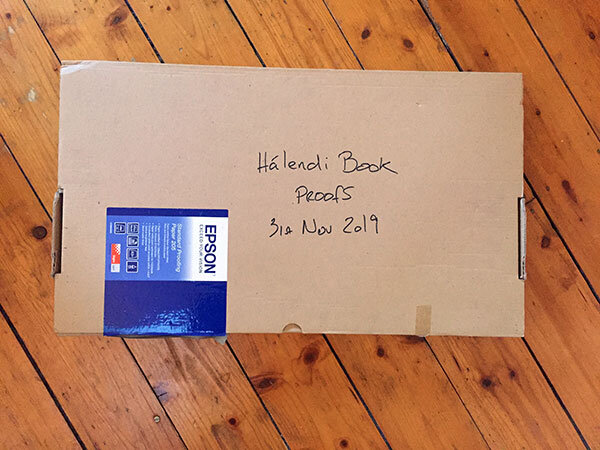I’ve been meaning to write some reviews of three books I received recently, but due to work commitments, I’ve just not got round to it until now. I have the new book by Paul Wakefield to review (big fan of Paul’s landscape work) and also a new book by my Romanian friend Dorin Bofan. Which is also a very beautiful book. I hope to get round to writing reviews of these two titles over the summer.
But today I’d like to start with Norman McCloskey’s Kingdom book which I received late last year. I wrote to Norman at the time (I did not know him) to congratulate him for such a beautiful design. I have never seen a book with such a beautiful gold cover!
It was clear from the first page that Kingdom is a work of love. Norman is clearly very much involved in his part of Southern Ireland, and I got the feeling that he has spent many mornings and evenings, out roaming around Kerry to make the images that are presented in the book.
I also enjoyed very much his (extensive) introduction. Often intros to books are short affairs, but I thought he gave a very detailed account of why he focussed on Kerry, and also his life there.
I always prefer books to be highly focussed on a particular subject. Rather than just a collection of images from around Ireland, Kingdom is definitely a love letter to Kerry.
From speaking to Norman, it’s clear that this part of Ireland has become his back yard, a place that he has grown into over the years. Finding the right landscape for your work, is key for personal development. It is something that I strongly believe in. If we are able to find a place that keeps inviting us back, and we find our work seems to go from strength to strength, then I think we should keep returning. We have found a landscape that matches us in terms of giving us growth in what we do, and meeting our abilities. This is what I liked very much about Kingdom. Norman had felt no need to and buy a plane ticket: he had it all here right in front of him and so he’s worked this landscape, and it has become part of him.
I’m delighted to have a copy of Norman’s book. Apart from being a beautiful object, I just think it has a simple conceptual aspect to it: here is a man who loves his own back yard, and if you give him an hour or two, he will take you for a tour of it in this very book.
You can find out more here.
One parting thought, before I end today’s post:
In my view, all keen landscape photographers should collect photographic books. I can appreciate that many landscape photographers are always looking to learn something from a book, so they may focus on books that are tutorial based. But from my own personal experience, I have learned so much from delving into someone’s imagery. There is nothing quite like becoming absorbed in the pages of a nicely printed book, and printed images always trounce websites in terms of showing more detail.
I have an extensive collection of photo books at home. Some of them are so precious to me, that when I feel I am losing inspiration for photography, I will dig out one or two titles that are a key reminder as to why I got into this in the first place. But mostly, because they satisfy the soul.












